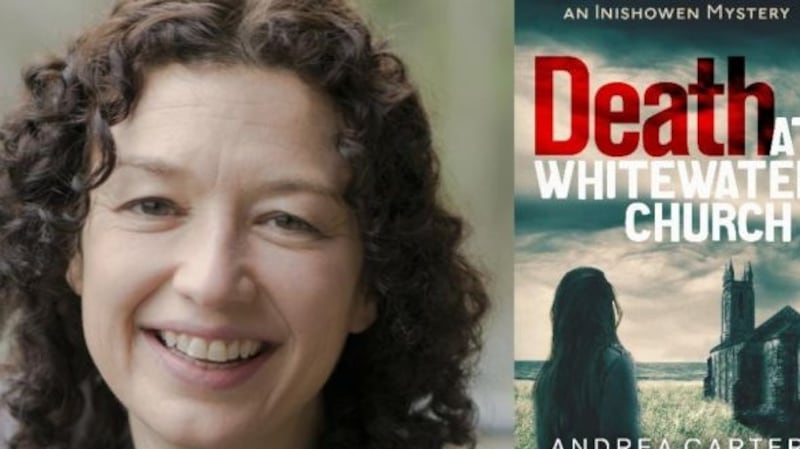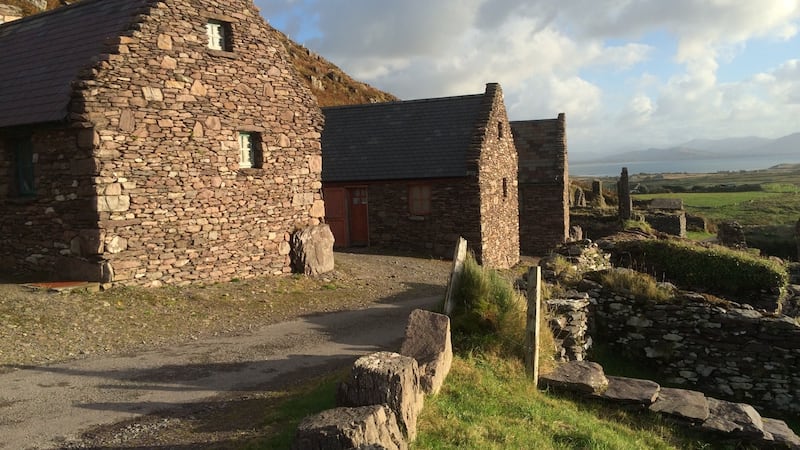It is impossible to find, warned all of the blogs. Surely, I thought, getting lost is impossible these days. I had a hand-drawn map, a road map, and Google maps on my phone. How hard could it be?
I got lost.
It was Friday afternoon and I was on my way to Cill Rialaig, the pre-Famine village on Bolus Head, Co Kerry, which was rebuilt as an artists’ and writers’ retreat in 1992 by former publisher Noelle Campbell-Sharpe and a local community group.


Mary in the Ballinskelligs post office was helpful. "Go to the end of the road, turn right and then stay left." She smiled. "No, there's no sign." I threw in a go raibh míle maith agat for good luck but Mary's directions (or my interpretation of them) landed me in someone's back yard.
Three quarters of an hour later (having travelled a net distance of six kilometres from the post office) I pulled in beside a row of pretty stone cottages, their gable ends facing the sea. My phone identified my location as the North Atlantic Ocean. Cill Rialaig’s setting is dramatic; the land in front of the houses falls away to a sheer cliff. Behind the village the hill rises steeply, sheathed in gorse and heather.
Along with fellow writers and poets Catherine Dunne, Anthony Glavin, Sean Hardie, Maria McManus, Lia Mills and Louise Phillips, I was staying in Cill Rialaig for 11 nights as part of a residency organised by the Irish Writers Centre. I was excited and apprehensive. Having completed the first two books of a series, I was returning to an unfinished, standalone novel I hadn’t touched in six months. I had no idea where I was going with it or even if I was even going to like what I’d written when I re-read it. Much would hang on the next 11 days.
I was assigned house No 5. The first thing that hit me upon entering the cottage was the light. With such small windows I had expected the houses to be dark, but what I couldn’t see from outside was that a large part of each ceiling is glass; the paint-splattered table and floor below are evidence that this is the section favoured by artists. The living room is large with a turf-burning stove and bags of room (both physical and head) to write. Throw in an attic bedroom, a small kitchen and shower room and you have all that you need and nothing you don’t want (to quote Sean Hardie) – in particular, no television, no radio and no wifi. The space was instantly calming.
On Saturday morning we had a candle-lit, smoke-filled, tea-soaked meeting in the Seanchaí’s House (next door to mine) after which, we returned to our cottages to write.
I set out my laptop and notes, used the hooks provided for artists to hang pictures of my characters on the walls, made coffee and began to work. For days I interspersed my writing with periods of pacing up and down while I talked to myself or harangued my characters. When they turned a deaf ear I went for a run; long punishing runs up Bolus Head, through the sheep and the gorse and the stone walls and the fields that just seemed to disappear into the sea.
In the mornings I stood outside my cottage, mug of tea in hand. The sea changed every day; there were days when it was azure blue, the rocks so vivid you thought you could touch them, others when it was green and frothing, or grey and mysterious, the islands cloaked in mist.
In the evenings I lit a fire and worked my way through the stack of books I’d brought. The advice given is that if you want to write you must read, but never have I tested it so honestly. There were days when my only interaction outside of what I was writing was with the novel I was reading for pleasure. I read differently somehow to the way I do at home.
For the most part we were solitary, working away within our individual cottages. But every few days – in someone’s cottage, around someone’s fire – we came together as a group. That feeling of anticipation I felt while walking down the hill (or up it, for my cottage was in the middle) with a bottle of wine under my oxter after a day or two alone, is one I suspect I will never quite repeat. And they were evenings to be treasured. We got to know one another through telling stories, with not a phone in sight.
So did it work for me – this retreat? Most writers will know difficult areas in their work, issues that they write around for as long as they can, circling like a shark afraid to go on the attack until they are sure. This is the kind of work to tackle on a writing retreat such as Cill Rialaig. Free to immerse yourself utterly in the world of your own creation, solutions become clear; obvious, even. You live with what you are writing; rise with it in the morning and take it to bed with you at night. As a method, it works.
As for my fellow villagers, the warm and talented group I was privileged to spend my residency with; I missed them when I left. The final night when we read by candlelight from the work that we had done during the week was one I will never forget.
Death at Whitewater Church by Andrea Carter was published in September. The second in the series, Treacherous Strand, will follow next year











